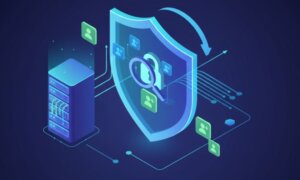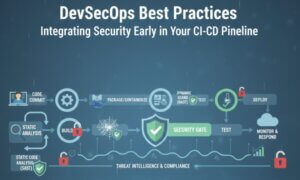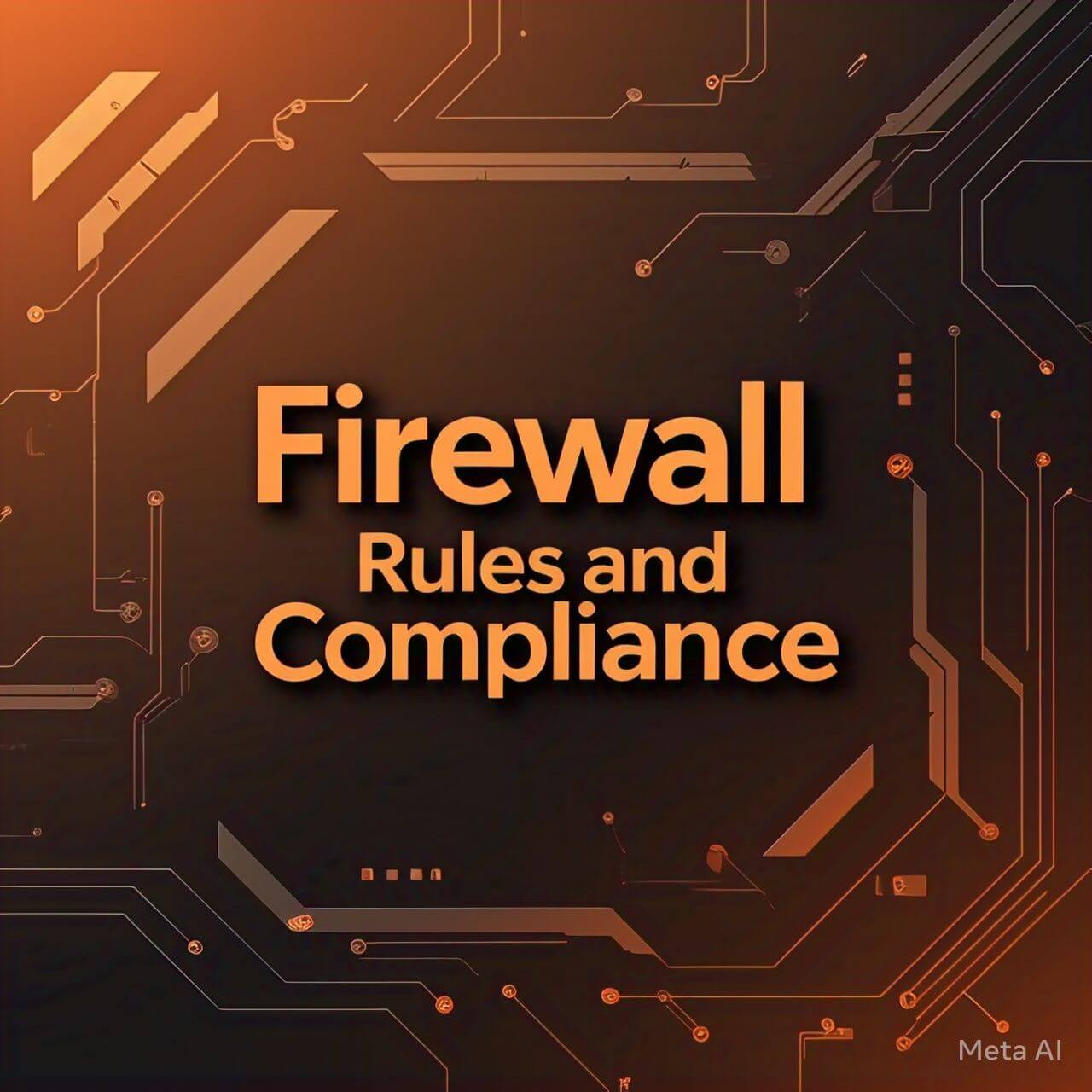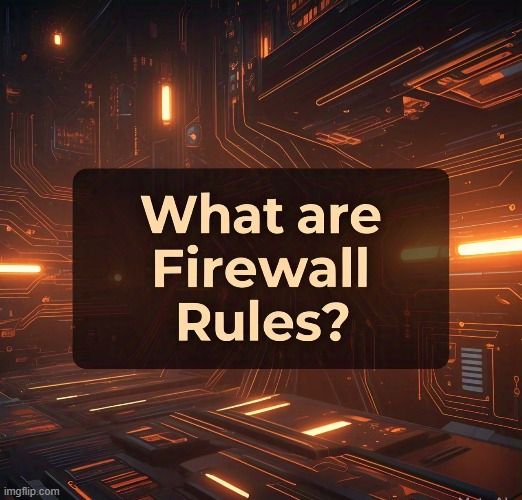Cybersecurity compliance is more than just a best practice—it is a necessity for businesses handling sensitive data. Regulatory frameworks such as PCI-DSS, HIPAA, GDPR, and ISO 27001 impose strict security requirements to safeguard information against cyber threats. Firewalls play a crucial role in achieving compliance by enforcing network security policies and controlling data flow. This blog explores how firewall rules help organizations meet security standards and best practices for ensuring compliance.
Table of Contents
Understanding Firewall Rules and Compliance
Firewall rules are predefined security policies that determine how network traffic is permitted or denied. These rules define access controls, monitor data transmission, and prevent unauthorized access to critical systems. Compliance mandates require organizations to establish, document, and enforce firewall configurations to protect sensitive data from breaches and cyberattacks.
Regulatory Standards and Their Firewall Requirements
Different regulatory frameworks require specific firewall configurations to ensure compliance. Here’s how firewall rules align with key security standards:
1. PCI-DSS (Payment Card Industry Data Security Standard)
PCI-DSS applies to organizations handling credit card transactions. It mandates firewall implementation to secure cardholder data. Key requirements include:
Restricting inbound and outbound traffic: Firewalls must block unapproved traffic between internal networks and external sources.
Denying direct public access to systems storing cardholder data: Organizations should isolate payment systems from the internet.
Documenting and reviewing firewall rules: Regular audits ensure compliance and rule effectiveness.
2. HIPAA (Health Insurance Portability and Accountability Act)
HIPAA applies to healthcare organizations and mandates strict controls for safeguarding patient data. Firewall-related requirements include:
Limiting access to electronic protected health information (ePHI): Only authorized personnel should be able to access sensitive data.
Encrypting sensitive data during transmission: Firewalls should enforce secure protocols like TLS and SSH.
Monitoring and logging network activity: Logs should capture attempted breaches and unauthorized access.
3. GDPR (General Data Protection Regulation)
GDPR enforces data protection regulations for businesses handling EU citizen data. Firewall-related compliance includes:
Preventing unauthorized access to personal data: Organizations must enforce access control lists (ACLs) to restrict traffic.
Ensuring data integrity and confidentiality: Firewalls should prevent data exfiltration and unauthorized transfers.
Regular firewall audits: Organizations must assess security measures and document compliance efforts.
4. ISO 27001 (International Standard for Information Security Management Systems)
ISO 27001 provides a structured approach to information security management. Firewall compliance involves:
Implementing network security controls: Organizations must deploy firewalls to protect sensitive data from cyber threats.
Performing risk assessments and updates: Firewall rules should be reviewed regularly to adapt to evolving threats.
Defining incident response protocols: Firewalls should log and alert security teams about suspicious activity.
Best Practices for Ensuring Firewall Compliance
To meet regulatory requirements, organizations should implement firewall rules effectively and perform regular audits. Here are best practices for maintaining firewall compliance:
1. Implement the Principle of Least Privilege (PoLP)
Firewall rules should be configured to allow only essential traffic while blocking everything else by default. This minimizes the attack surface and reduces unauthorized access risks.
2. Document and Review Firewall Rules Regularly
Maintaining an up-to-date record of firewall configurations helps ensure transparency and compliance. Organizations should:
Conduct quarterly or annual firewall audits to assess rule effectiveness.
Remove obsolete or redundant rules that may pose security risks.
Validate that all approved connections align with business needs.
3. Enforce Strong Access Controls
Organizations should define strict access control rules based on user roles and responsibilities. This includes:
Restricting administrative access to firewalls.
Limiting user permissions to only necessary systems and services.
Using multi-factor authentication (MFA) for firewall management access.
4. Monitor Firewall Logs and Traffic Patterns
Continuous monitoring of firewall logs helps detect suspicious activity and compliance violations. Best practices include:
Configuring firewalls to log all allowed and blocked traffic.
Using Security Information and Event Management (SIEM) tools like Splunk or ELK Stack for log analysis.
Setting up real-time alerts for unusual network behavior or repeated access attempts.
5. Segment Networks for Enhanced Security
Network segmentation reduces exposure to cyber threats by isolating critical systems from external threats. Organizations should:
Separate internal, external, and DMZ networks to minimize risk.
Define firewall rules that restrict access between network segments.
Apply zero trust principles by verifying all access requests before granting permissions.
6. Use Firewalls to Enforce Encryption Standards
Firewalls should be configured to block unencrypted data transmissions and enforce secure protocols. Compliance standards recommend:
Allowing only TLS 1.2 or later for encrypted communications.
Blocking outdated or weak encryption protocols such as SSL 3.0.
Enforcing VPN policies for secure remote access.
7. Conduct Penetration Testing and Vulnerability Assessments
Regular penetration testing helps identify weaknesses in firewall configurations. Organizations should:
Simulate real-world cyber attacks to evaluate firewall defenses.
Use tools like Nmap, Nessus, and Metasploit to test firewall rule effectiveness.
Address vulnerabilities by adjusting firewall rules accordingly.
Challenges in Firewall Compliance
While firewalls are essential for meeting security standards, managing their compliance comes with challenges:
Complex Rule Sets: Organizations often struggle with excessive and outdated firewall rules, making compliance difficult.
Misconfigurations: Improperly configured rules can introduce vulnerabilities and expose sensitive data.
Evolving Threats: New attack vectors require continuous updates and firewall rule adjustments.
Regulatory Changes: Compliance standards evolve, requiring organizations to stay informed and adjust security measures accordingly.
Conclusion
Firewalls play a crucial role in meeting security compliance standards by enforcing access controls, securing data transmissions, and preventing unauthorized access. Organizations must implement best practices such as the principle of least privilege, regular firewall audits, access control enforcement, and network segmentation to ensure compliance with frameworks like PCI-DSS, HIPAA, GDPR, and ISO 27001. By continuously monitoring firewall rules and adapting to evolving threats, businesses can protect sensitive data and maintain regulatory compliance in an increasingly complex cybersecurity landscape.
References
Why Businesses Trust SecureMyOrg for Comprehensive Network Security
At SecureMyOrg, we uncover and fix all possible security vulnerabilities of mobile and web, while providing solutions to mitigate risks. We are trusted by renowned companies like Yahoo, Gojek and Rippling, and with 100% client satisfaction, you’re in safe hands!







Some of the things people reach out to us for –
- Building their cybersecurity program from scratch – setting up cloud security using cost-effective tools, SIEM for alert monitoring, building policies for the company
- Vulnerability Assessment and Penetration Testing ( VAPT ) – We have certified professionals, with certifications like OSCP, CREST – CPSA & CRT, CKA and CKS
- DevSecOps consulting
- Red Teaming activity
- Regular security audits, before product release
- Full time security engineers.
Relevant Posts

How To Inspect Encrypted Traffic Without Breaking Privacy
Network administrators face a challenge: securing systems while respecting privacy. This guide explains how to inspect encrypted traffic without breaking privacy using metadata, anomaly detection, and machine learning ensuring visibility, compliance, and trust.

How to Audit Infrastructure as Code (IaC) for Security Vulnerabilities
Discover how to audit Infrastructure as Code (IaC) for security vulnerabilities with this practical guide. Learn to scan IaC files using tools like Checkov, fix issues like exposed resources, and integrate audits into CI/CD pipelines. Protect your cloud systems from misconfigurations and ensure compliance with clear, actionable steps.

DevSecOps Best Practices: Integrating Security Early in Your CI/CD Pipeline
This article provides a practical guide to embedding security into every stage of your CI/CD pipeline. Learn core DevSecOps best practices like SAST, DAST, dependency scanning, secrets management, and compliance automation to catch vulnerabilities early, foster a culture of shared ownership, and build a secure-by-design development process that accelerates release cycles.

5 Cloud Misconfigurations That Lead to Data Breaches
Cloud misconfigurations are one of the leading causes of data breaches, yet they’re also among the most preventable. From exposed storage buckets to weak IAM policies, attackers exploit these mistakes daily. Learn about the top 5 misconfigurations and how your organization can fix them before they lead to costly data exposure.

How Can Ethical Hacking Training Elevate Your Internal Cybersecurity?
Ethical hacking training empowers organizations to strengthen internal cybersecurity by uncovering vulnerabilities before attackers do. From mastering penetration testing to enhancing incident response, this training builds a proactive security culture. Learn how Secure My ORG’s programs can elevate your team’s skills and fortify defenses against modern threats like AI-driven attacks.

AI‑Generated Malware: Threat or Hype?
AI-generated malware uses advanced algorithms to create adaptive and hard-to-detect threats, posing serious challenges for modern cybersecurity defenses. Unlike traditional malware, it can evolve on its own, learning how to bypass security systems without human input. As a result, cybersecurity teams must increasingly rely on AI-driven tools and strategies to detect and neutralize these sophisticated digital attacks.

